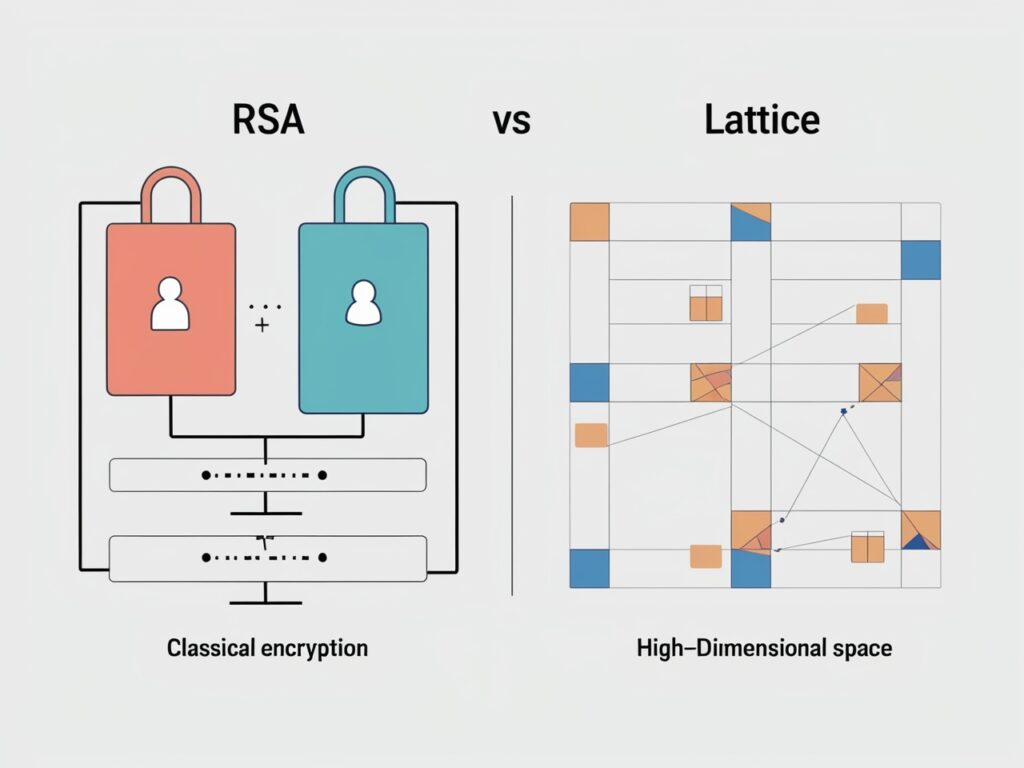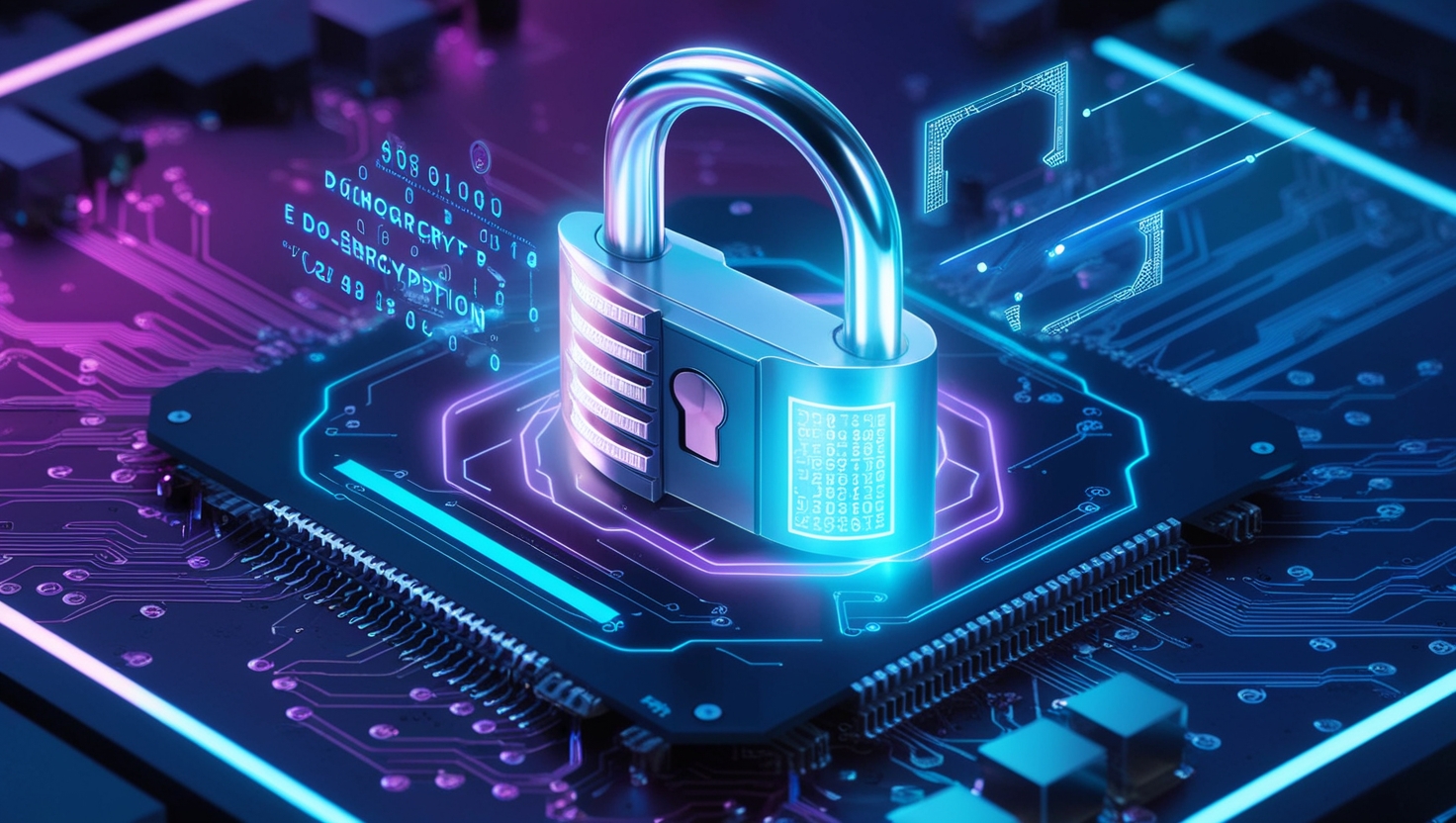Quantum computing is advancing fast. That’s great for science—but dangerous for digital security. Traditional encryption like RSA and ECC will soon be obsolete. The solution? Post-quantum cryptography, also called PQC. It’s designed to protect your data against future quantum attacks. This guide covers what you need to know—and do—right now.
Executive Summary & Actionable Takeaways
Quantum computing security isn’t optional anymore. It’s becoming critical. Experts warn that attackers are already stealing encrypted data today, hoping to decrypt it later with powerful quantum machines. These are called “harvest now, decrypt later” (HNDL) attacks. The danger is real, and it’s already here.
So what should you do?
- Audit your digital systems: Identify where traditional encryption is used.
- Ask your vendors: Do they have a PQC roadmap? Are they NIST-aligned?
- Start small: Begin testing hybrid cryptography that combines classical and quantum-safe algorithms.
Organizations that wait might be forced to upgrade under pressure. Those who prepare now will gain a security edge and customer trust. 2025 is the turning point. The future of encryption has already started.
What Is Post-Quantum Cryptography?
Post-quantum cryptography is a new form of encryption that’s secure against both classical and quantum computers. Unlike RSA or ECC, it relies on problems that are hard for quantum machines to solve, such as lattice-based or hash-based challenges.
It doesn’t require quantum hardware to work. PQC runs on the same devices we use today—laptops, phones, and servers. That makes it easier to adopt than more exotic methods like quantum key distribution.
Some PQC algorithms, like CRYSTALS-Kyber and Dilithium, are already being rolled out in browsers, VPNs, and cloud services. They’ve even been tested in live mobile networks. You might already be using them without knowing.
Quantum Computing Security Threats
Quantum computers use specialized algorithms that make them dangerous to today’s encryption. Shor’s algorithm can factor large numbers, which breaks RSA. Grover’s algorithm speeds up brute-force attacks, which weakens symmetric encryption like AES.

This threat isn’t abstract. It directly affects:
- Public Key Infrastructure (PKI)
- VPNs and TLS encryption
- Digital signatures and secure emails
What makes it worse is the longevity of sensitive data. Think about health records, military files, or financial transactions. Even if they’re safe now, they won’t be when quantum computers arrive.
And quantum attacks are sneaky. They don’t need to crack encryption today. They just need to steal the data now and decrypt it later. That’s HNDL in action—and it’s already happening.
Quantum also affects symmetric systems, although less dramatically. AES-256 may drop to an effective 128-bit strength under Grover’s attack. That’s still strong—but it shows that no system is completely immune.
Market Trends and Industry Adoption
The post-quantum cryptography market is exploding. In 2025, it’s estimated at $1.68 billion. By 2034, it’s projected to reach nearly $30 billion, growing at an annual rate of 37%.
Why the surge? Regulatory pressure and looming threats.
Industries leading the charge:
- Banking: Customer data and digital transactions demand long-term privacy.
- Telecom: 5G networks are integrating PQC for future-safe connections.
- Defense: National security requires protection against next-gen cyber threats.
Tech giants are already in the game. Google is deploying Kyber in Chrome. Microsoft has PQC tools in Azure. AWS and IBM are running PQC pilots too.
Here’s what most people don’t know: Telecom providers in Asia have already tested PQC in live networks. SoftBank in Japan and SK Telecom in South Korea showed PQC can work without slowing down 5G performance.
Standards and Regulatory Landscape
The U.S. National Institute of Standards and Technology (NIST) is leading the charge on PQC standards. After a multi-year review, NIST chose:
- CRYSTALS-Kyber for key exchange
- CRYSTALS-Dilithium and SPHINCS+ for digital signatures
These are now official standards and will shape cybersecurity across industries.
Governments are also mandating PQC. FIPS 140-3 and GDPR already mention the need for strong encryption. More compliance rules are on the way, especially for financial services and critical infrastructure.
Some algorithms in NIST’s race were dropped after cryptanalysis revealed weaknesses. That’s why algorithm agility—being able to switch encryption systems—is so crucial. The field is still evolving fast.
Case Studies & Success Stories
PQC is no longer experimental. It’s been deployed—and it works. Here are some real-world examples:
- SoftBank (Japan): Tested hybrid PQC in 4G/5G networks. Result? Strong security with only minor delays. Customers didn’t even notice.
- SK Telecom (South Korea): Used PQC-enabled SIM cards for 5G. Calls were encrypted and seamless, even during high traffic.
- QNu Labs (India): Secured 1,200+ users and three defense datacenters. Their PQC platform proved robust in high-risk environments.
- Ethereum blockchain: Developers are experimenting with integrating PQC into smart contracts. It’s complex—but crucial for future-proofing decentralized systems.
What ties all these together? PQC proved it can be secure, scalable, and real-world ready.
Technical Deep Dive—How PQC Algorithms Work
PQC algorithms don’t rely on factoring or elliptic curves. Instead, they use mathematical problems that even quantum computers struggle with.
Lattice-Based Cryptography
This is the backbone of NIST’s selections. Lattices are grids of points in high-dimensional space. Breaking lattice problems is hard—even with a quantum computer. Algorithms like Kyber and Dilithium fall in this group.

They’re also efficient. In some benchmarks, they outperform RSA and ECC in key generation and verification times.
Hash-Based Signatures
These use cryptographic hash functions to generate secure digital signatures. They’re simple and well-understood. SPHINCS+ is a leading example and is already used in IoT and satellite firmware updates.
Code-Based and Multivariate Schemes
Less popular, but useful in niche areas. Code-based cryptography has strong security history, but with large key sizes. Multivariate polynomials offer fast signing but are harder to implement securely.
One challenge is size. Some algorithms have signatures as large as 8KB. That’s fine on a server—but tough on smartwatches or low-memory devices.
Implementation Challenges & Migration Strategies
Switching to PQC isn’t easy. It takes planning, testing, and investment. Organizations must begin by auditing their cryptographic systems. What algorithms do they use? Where are they embedded?
A full migration will take years. That’s why experts recommend hybrid cryptography—using both classical and quantum-safe algorithms together. This ensures compatibility and safety during the transition.
Performance varies. PQC algorithms can outperform RSA in speed but may increase message size. Storage and bandwidth costs might rise.
Vendor readiness is another hurdle. Some security providers are PQC-ready. Others lag behind. Legacy systems—especially hardware—may never support PQC.
To stay flexible, organizations should adopt algorithm agility. This means designing systems that can quickly swap encryption methods as standards evolve.
Consumer and Enterprise Voices
The business world is speaking up.
At events like CISO Forum 2025, cybersecurity leaders emphasize acting now. Delaying puts data, compliance, and reputation at risk.
Consumers are also weighing in. On Reddit, developers discuss testing PQC in personal projects. Many advocate hybrid rollouts, especially for public services like websites and email.
One key takeaway? Hardware Security Modules (HSMs) are going quantum-safe fast. By late 2025, most enterprise-grade HSMs will include PQC support by default.
Future-Proof Encryption—Beyond PQC
PQC isn’t the only game in town. Other technologies are joining the fight.
Quantum Key Distribution (QKD)
This sends keys using quantum particles. If someone tries to intercept them, it alters the signal—instantly revealing the attack. QKD is already used in some government and finance networks. But it’s expensive and requires special hardware.
Symmetric Key Rotation
This technique changes encryption keys rapidly—sometimes with every session. It limits damage even if a key is compromised. Some VPN and cloud platforms already support this.
RFC 8784-compliant systems offer key agreement protocols designed to resist quantum threats. These work without changing hardware, making them ideal for businesses that can’t afford big upgrades.
Action Plan—How to Prepare for the Quantum Era
Now is the time to act. Here’s how:
For Enterprises:
- Audit cryptographic assets and legacy systems.
- Demand PQC plans from vendors.
- Deploy hybrid encryption in phases.
- Train your security teams on PQC best practices.
- Update compliance frameworks to include NIST’s standards.
For Consumers:
- Choose services that disclose quantum-readiness.
- Enable updates in browsers, VPNs, and password managers.
- Follow news from NIST and top tech vendors.
Some providers already offer quantum-safe SSL certificates for websites. Getting ahead of compliance may save you millions down the line.
Frequently Asked Questions
Estimates say 5–10 years. But HNDL attacks are happening now, so preparation is urgent.
Yes. Chrome, Firefox, and some VPNs are rolling it out. Also, look for apps that disclose PQC use.
Some algorithms are faster than RSA. Others may use more bandwidth. It depends on the task.
PQC runs on normal hardware. QKD uses quantum physics and special gear for key exchange.
Key Takeaways
- Post-quantum cryptography is here—and growing fast. Start adopting it now.
- Quantum computing threatens today’s encryption. Don’t wait until it’s too late.
- Hybrid and agile strategies are best. Use PQC alongside classical methods.
- Follow NIST standards. Kyber and Dilithium are becoming industry defaults.
- Act now to protect your data and business. The quantum future won’t wait.
